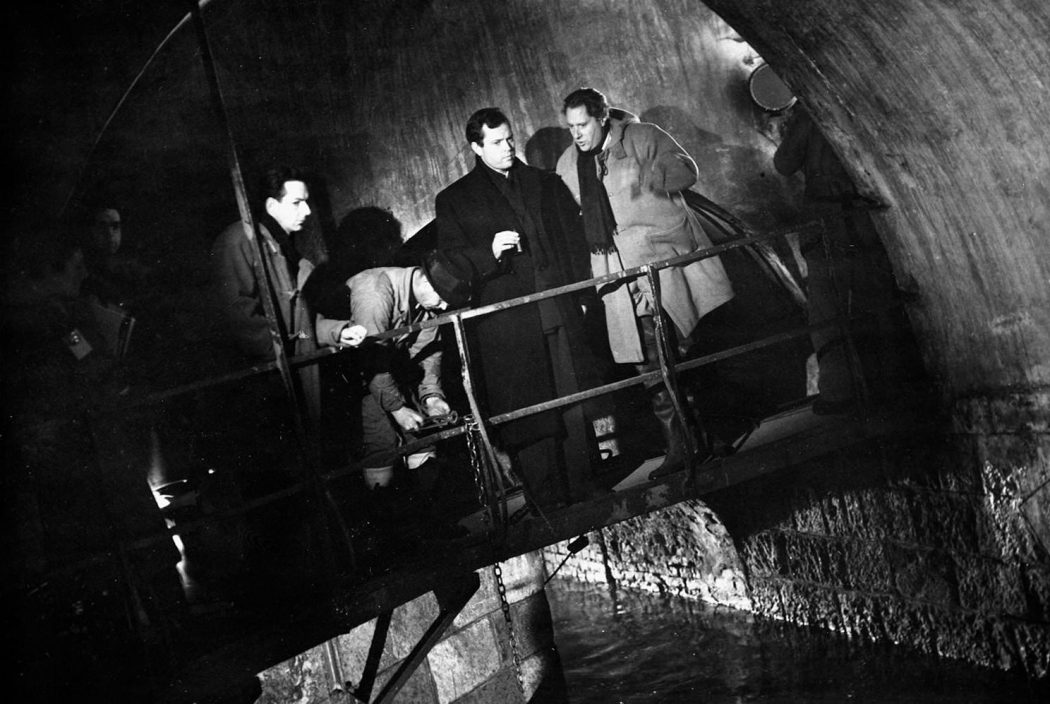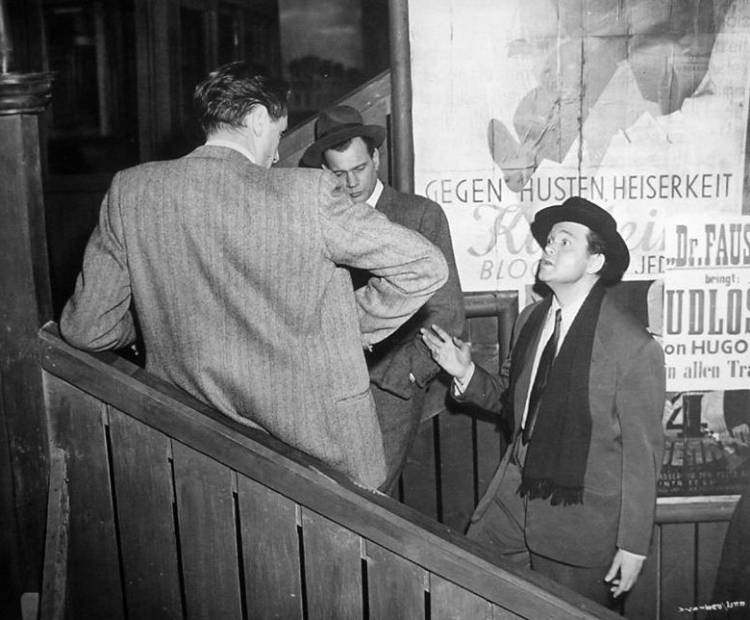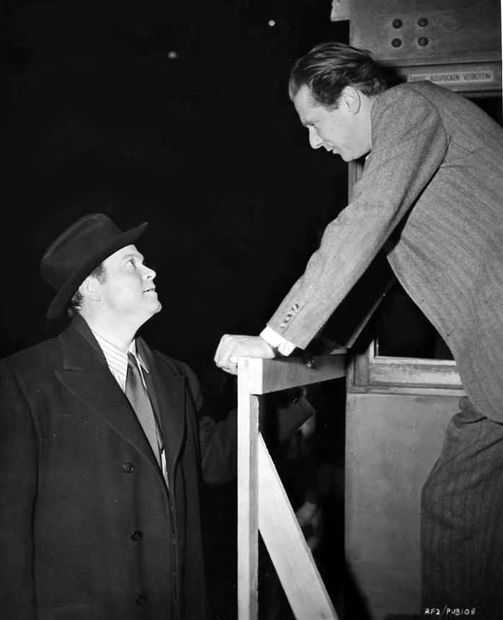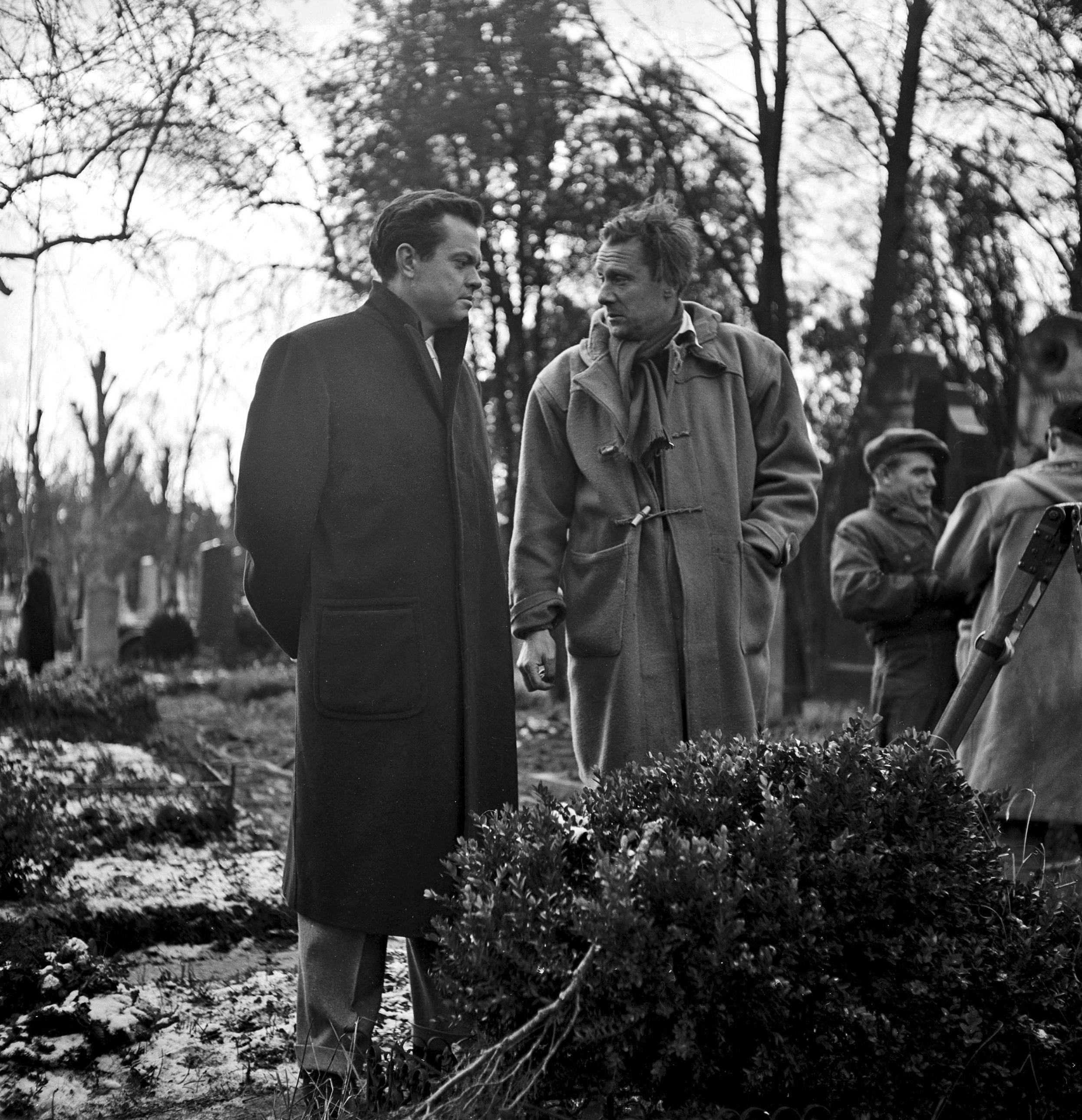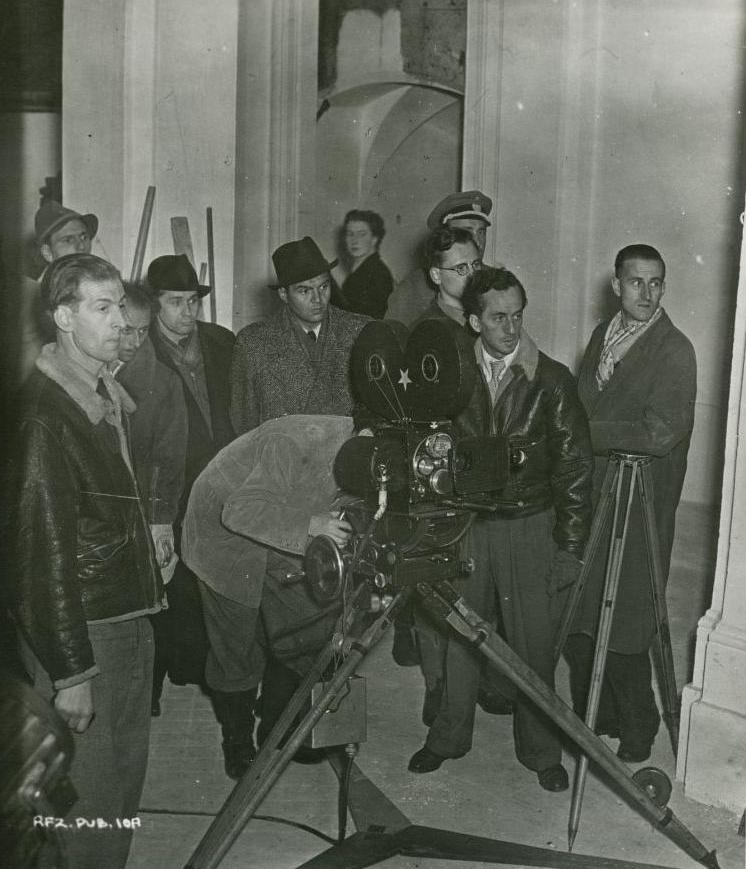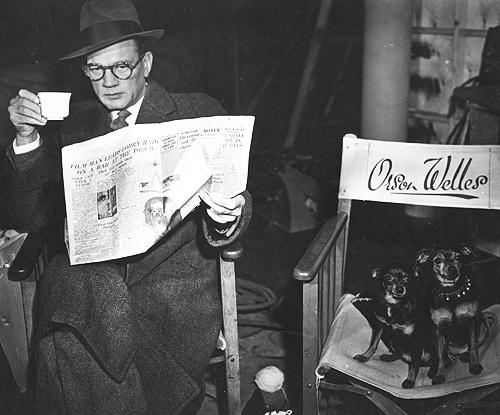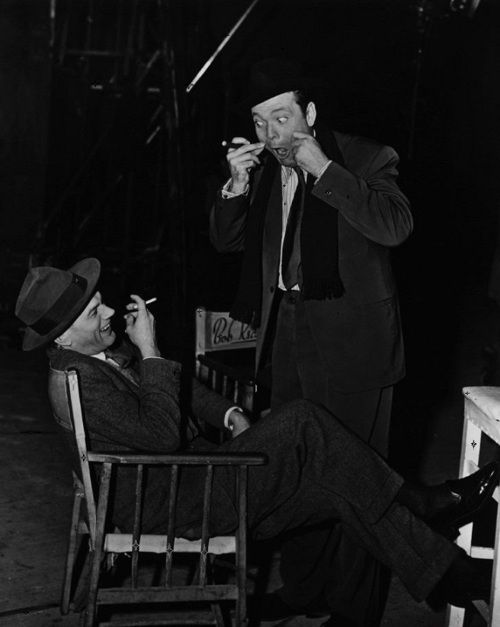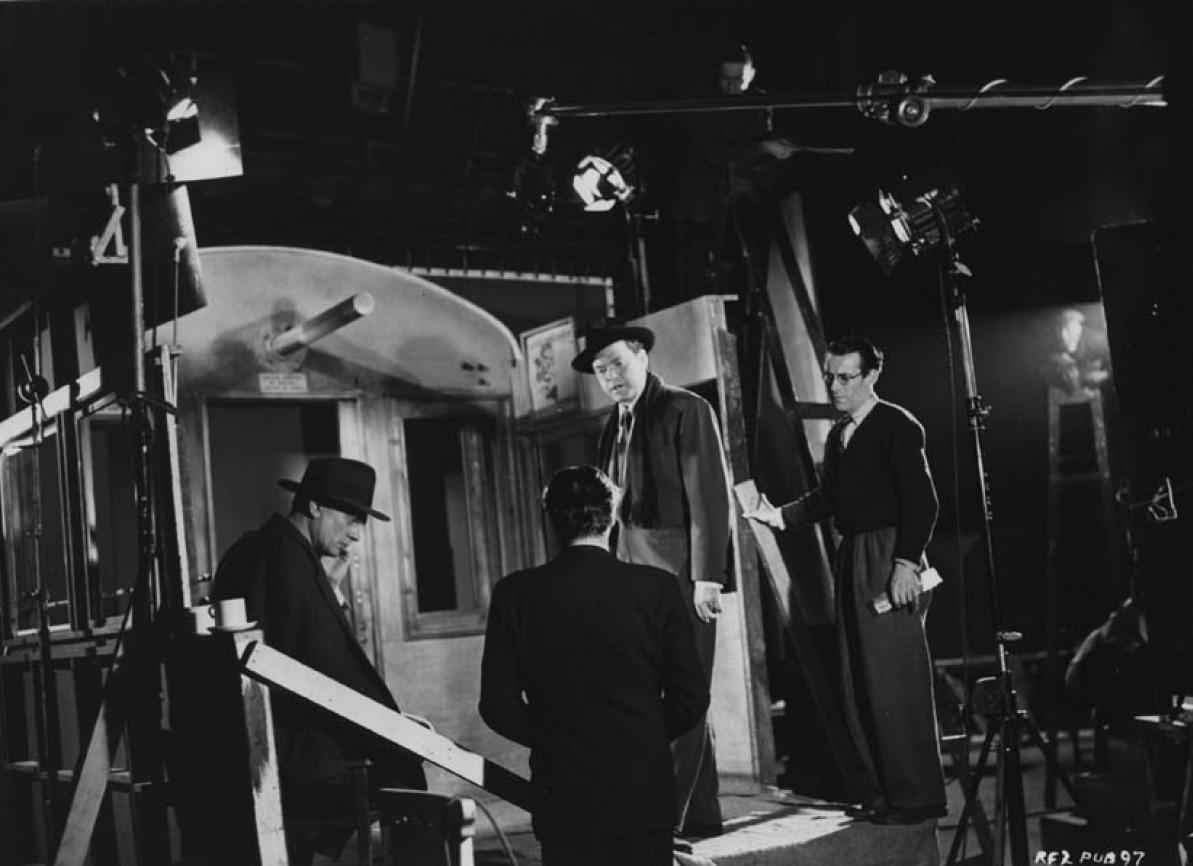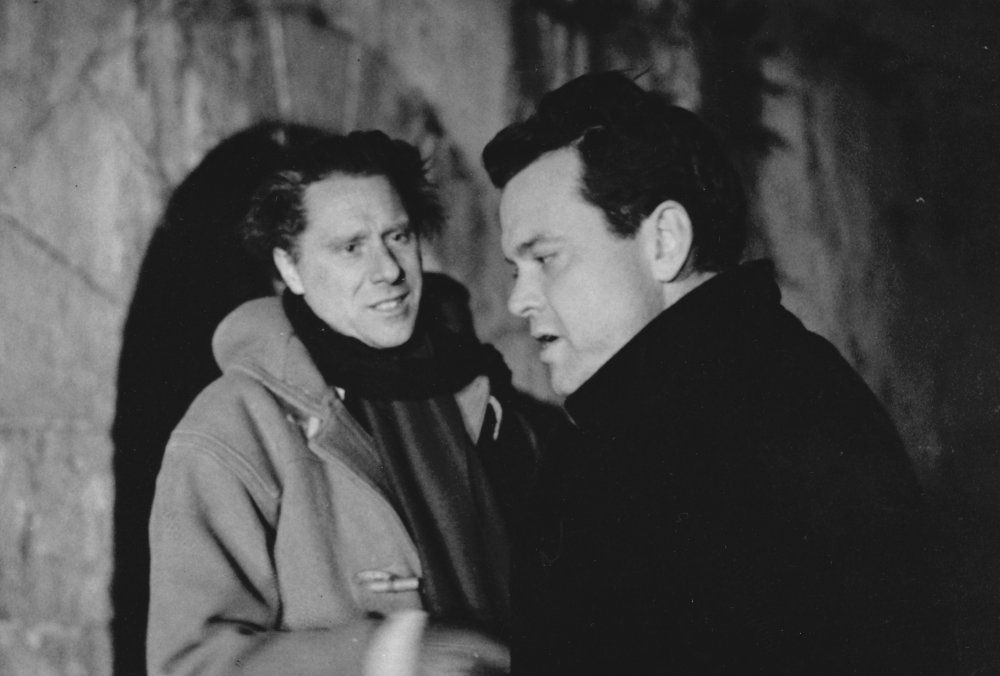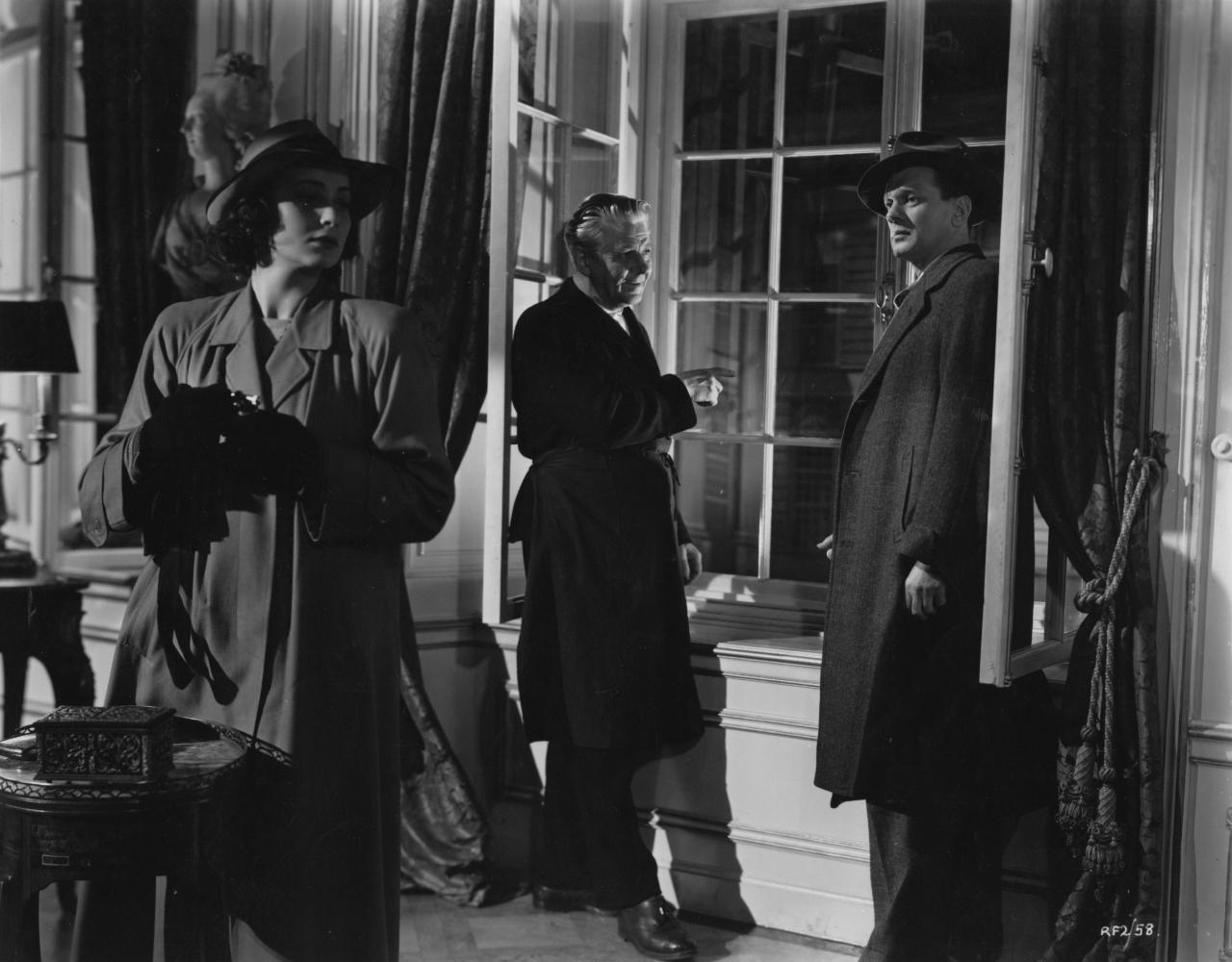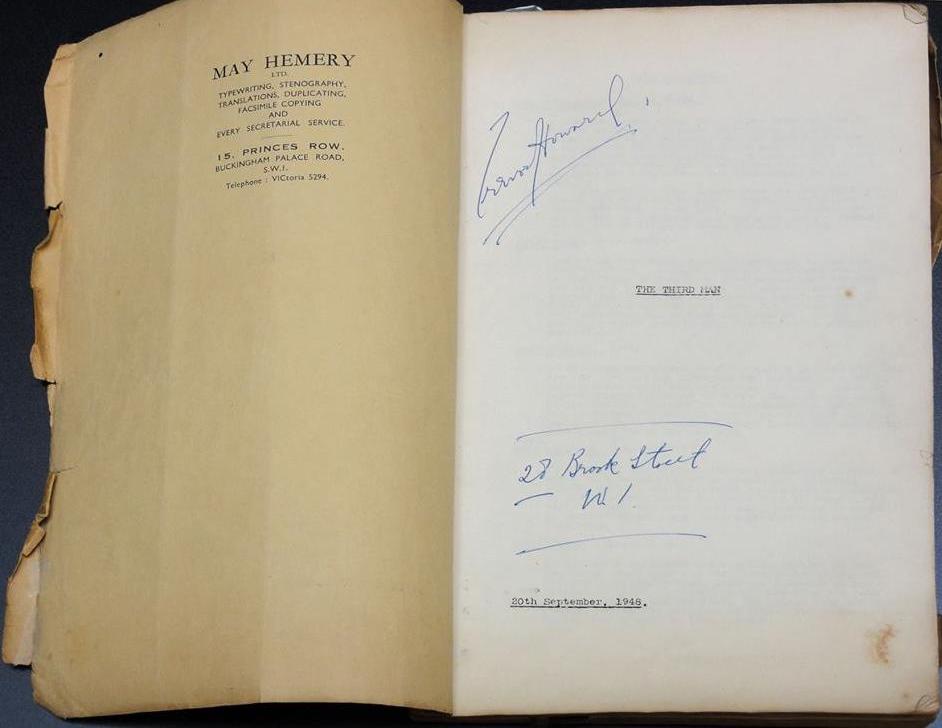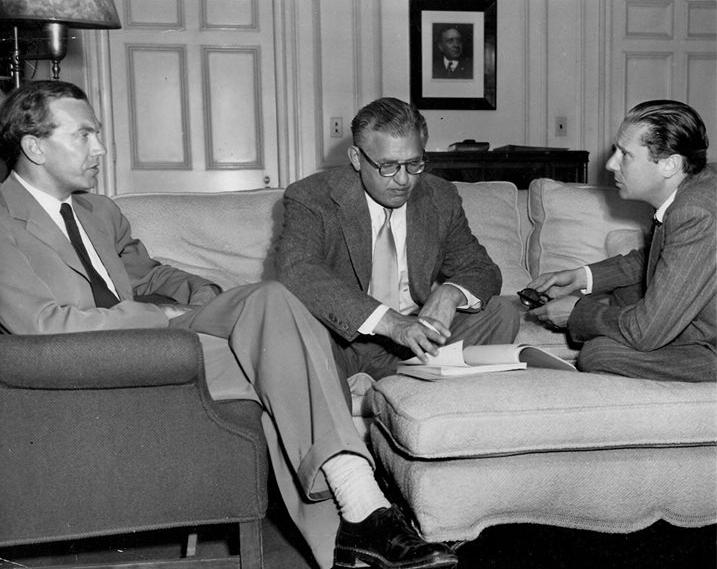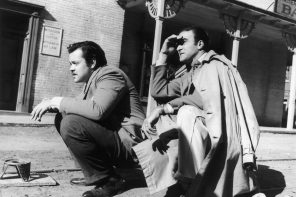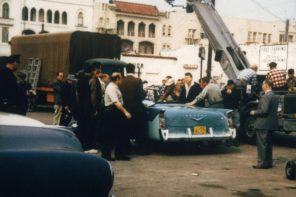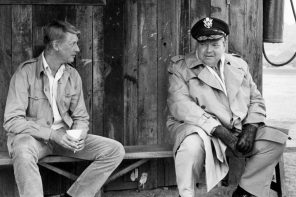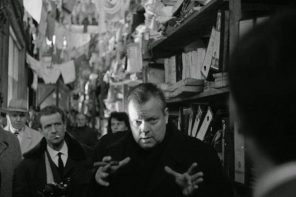Carol Reed’s The Third Man might just be as visually stimulating as classic films get. The 1949 film noir features great performances from Joseph Cotton, Alida Valli and the indestructible Orson Welles, it evokes an unprecedented atmosphere enhanced by supreme black-and-white cinematography by the wonderful Robert Krasker, displays eloquent ingenuity in Graham Greene’s screenplay and uses Anton Karas’ melancholy zither tunes that stir the soul and warm the heart. The story is set in the post-WW2 Vienna, and the locations are used to the fullest, becoming if not an additional, full-bodied character, then at least the perfectly staged arena for the macabre events to unfold. Carol Reed’s positioning and use of the cameras might have puzzled some, even annoyed others, but Reed’s decision to use distorted angles and tilted shots considerably empowered the audience’s perception of the decaying, chaotic, war-battered Europe of the period. It remains a mystery to what degree Welles influenced the making of this film, as The Third Man unmistakably evokes the images of Welles’ earlier works, such as Citizen Kane and The Lady from Shanghai. The movie lingers in the collective film community’s mind as one of the best examples of film noir, as well as an example of most innovative and original efforts ever recorded on the celluloid. And perfectly rightfully so. Harry Lime’s brilliant speech on the Swiss Cuckoo Clocks, the unforgettable sewer chase, the impeccable script probably only a writer of Greene’s caliber could deliver… More than 65 years since its release, The Third Man is still a marvel to see, experience and learn from.
A monumentally important screenplay. Screenwriter must-read: Graham Greene’s screenplay for The Third Man [PDF]. One of the best film noir screenplays ever written. (NOTE: For educational and research purposes only). The DVD/Blu-ray of the film is available at Amazon and other online retailers. If you can manage it, try to get a hold of the Criterion Collection’s now out-of-print DVD/Blu-ray that features some great extras.
 Loading...
Loading...
On the photo below is Graham Greene together with David O. Selznick and Carol Reed over the script of The Third Man.
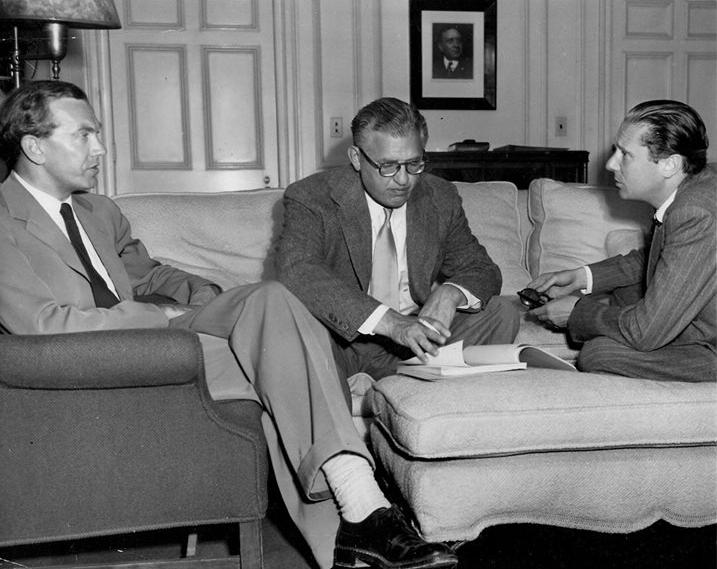
On May 14, 1948, British film producer Sir Alexander Korda signed a contract with American producer David O. Selznick, allowing his Selznick Releasing Organization the Western Hemisphere rights to four films: a Michael Powell-Emeric Pressburger adaptation of A Tale of Two Cities; The Doctor’s Story, to star Joseph Cotten; and two projects for Carol Reed: Tess of the D’Urbervilles and The Third Man. Of these, only Third Man would be made. The anti-American sentiment that frequently surfaces in Greene’s work is never explicit in The Third Man. Yet Selznick—even after the two central roles were recast as Americans—sensed that the screenplay was still too British. He bristled at the prospect of “paying a huge sum of money, and supplying our stars, to foist a piece of British propaganda upon the entire world.” In the end, Selznick’s fears were unfounded: The Third Man was recently named one of the 100 greatest American films in the AFI’s controversial poll. —The making of The Third Man

The production history of The Third Man, written by Charles Drazin and narrated by V.O. actor Robb Webb. From the Criterion Collection DVD release.
Iconic scenes from The Third Man, interpersed with pictures of how those scenes appear in today’s Vienna.
Orson Welles remembers The Third Man.
Every sentence in the whole script is about Harry Lime—nobody talks about anything else for ten reels. And then there’s that shot in the doorway—what a star entrance that was! In theatre, you know, the old star actors never liked to come on until the end of the first act… What matters in that kind of role is not how many lines you have, but how few. What counts is how much the other characters talk about you. Such a star vehicle really is a vehicle. All you have to do is ride. To borrow Cotten and Alida Valli from Selznick, Korda had to make a deal giving David American distribution. So in America the picture arrived as ‘David O. Selznick presents/A David O. Selznick Production/Produced by David O. Selznick,’ and so on. All David had done was to loan Alex a couple of actors. Alex dreamed up the whole project, in every sense of the word produced it, but David took the bows. I was sitting with them about two years after the picture had opened—when all Europe was still reverberating with the strains of the Third Man Theme, and Alex said, ‘You know, David, I hope I don’t die before you do.’ ‘Oh!’ said David. ‘Why?’ And Alex said, ‘I hate the thought of you sneaking out to the graveyard at night and scratching my name off the tombstone.’ —Orson Welles remembers The Third Man
There’s some truth in an old saying: ‘Movies aren’t written—they’re re-written, and re-written and rewritten.’ Graham Greene, when discussing his screenplay entitled The Third Man that he wrote for producer Alexander Korda and director Carol Reed, has said something very near to this. Moreover, close examination of his original—of the published screenplay and of footnotes to it that indicate subsequent alterations and the changes between the text and the film itself—provides one of the very best accounts that is available of the complex and sometimes mysterious process of the evolutionary stages of the work done by a writer and director. —Alexander Mackendrick, From Book to Screen: The Third Man

Martin Scorsese reveals how Carol Reed’s classic British noir from 1949 has influenced him and why it feels as fresh as ever. This is an exclusive transcript taken from a filmed interview with Martin Scorsese, courtesy of The Independent. Additional writing by Martin Scorsese.
I saw The Third Man for the first time on television in New York, with commercial interruptions. I think I was about 15 years old, maybe 16. I saw Citizen Kane around the same period. I remember that I wanted to see the film on its first release, but was unable to do so, which created a mystique about the film. The theme was a radio hit, but my first viewing was on TV, around ’56 or ’57. But even with commercial breaks on a 16-inch screen, the power of the picture, the surprise, the entertainment, the film-making itself… a revelation. Expressive style, virtuosity—I became fixated, obsessed.
I couldn’t wait to see the film again, but I had to wait until it was shown on television, maybe four or five months later. It wasn’t the optimum viewing condition, I still lived in a small apartment with my family, so it was difficult to find the concentration and quiet I needed to figure out why the picture affected me so much. I was becoming aware of film-making itself around this time, about storytelling, about extraordinary cinematic experiences.
Simultaneously, a young priest who was a mentor to me and some friends gave us Graham Greene’s books to read. The Power and the Glory had quite an effect on me. There was a stage version of it off-Broadway, and a live TV play with Laurence Olivier and George C Scott, also. Graham Greene’s Catholicism had a strong impact on me, his themes of sin and redemption. I was very much aware of Graham Greene’s contribution to The Third Man before seeing it. And I had seen his name on the credits of The Fallen Idol, in particular, the combination of Graham Greene and Carol Reed. I also admired Odd Man Out, as both of these films were shown on TV constantly.
I remember going to a place on 14th Street called Movie Star News where they had 8 by 10 glossies, production stills, and I bought a beautiful set of The Third Man, including some great artwork, and a great shot of Anton Karas under a table in the recording studio. They heard him playing his zither in a nightclub in Vienna, and when they went into the studio in London it didn’t sound the same. They figured out that acoustically it would sound more like it had in the nightclub if they had him play under a table.
About four months ago, I screened a beautiful 35mm print of the picture for my daughter and her friends. “Why do we keep watching this?” I suppose it’s [Joseph] Cotten and [Alida] Valli—that’s the emotional core of the picture. For instance, the scene where Holly Martins (Cotten) finally goes to her apartment. He’s a little drunk, and he tells her he loves her and he knows he doesn’t have a chance. That’s when she says, “The cat only liked Harry.” So that leads right into the great revelation of Harry Lime in the doorway with the cat—which is iconic. But it’s more than that—it’s one of the great epiphanies in movies: the cat turning the corner and nestling itself on those wing-tip shoes, and then Harry Lime being revealed when the light is turned on in the doorway and it shines in his face.
Remember Walker Percy’s great novel The Moviegoer? He refers to that moment in such a beautiful, special way. It became a moment internationally, a shared experience for a vast audience seeing that film. It’s not just a dramatic revelation—there’s something about Orson Welles’ smile at that point that shifts everything to another level, and it sustains no matter how many times you see it. Welles comes into the picture about halfway through. That’s the first time you actually see him, after you’ve spent so much time picturing him in your mind because everyone has been talking about him and thinking about him. So that might be the best revelation—or the best reveal, as they say—in all of cinema.
When Holly Martins finally meets Harry face to face on the Ferris wheel, you expect Harry Lime the criminal. Instead, he just jauntily walks up, says, “Hey, come on, let’s take a ride.” It’s just a casual conversation… about all those dots moving around down there, and do you mean to tell me that if somebody came to you and said you could make a lot of money, but the only catch is that every once in a while, one of those dots might stop moving, you’d really say no? And then the great line—”Tax-free, old man, tax-free.” And not to mention, Harry’s response to, “You used to believe in God”—”Oh, I still do believe in God, old man. I believe in God and Mercy and all that. But the dead are happier dead. They don’t miss much here, poor devils.” Welles’ contribution is enormous, of course. He inhabits the character. It’s all a perfect fit.
You can’t talk about The Third Man without recognizing the incredible contribution of [cinematographer] Robert Krasker. Those night scenes, the streets they wet down, the reflective surface it creates. Mad magazine did a memorable parody of The Third Man, picturing water trucks all over the city with massive hoses watering down every street. Then there’s the city of Vienna itself, split up into four sections, with people living in beautiful baroque apartments, the camera pans and we see half of it in ruins. There’s this extraordinary sense of a world that’s come apart, accentuated by the off-centred cameras, the canted angles. It depicts the emergence from mass psychosis, 60 million people killed in the war, a civilization destroying itself: the camera style expresses that. The images never feel grounded. There’s a story about when William Wyler, the great director, saw the picture and, as a joke, sent Carol Reed a level to keep his camera straight.
When the picture was released, the music became popular all around the world. That Third Man theme was a part of our lives. That sound was so strong, raw, yet jaunty. The sound of the zither itself feels ironic and provocative. I later found the actual soundtrack of the picture on an LP—it still sounds better than the CD. The zither music is a character in The Third Man, reflecting the madness and the desperation of that ruptured world, the feeling that anything can happen at any time. The upbeat irony of it…
Has it had an influence on my career? When I saw it, I was ripe for it—ready to understand what you can do with the camera. The themes of the picture made me feel comfortable about dealing with similar kinds of characters, characters you’d consider undesirable—the charm of evil. I did a paper on the film when I was 18 at NYU. The professor had different ideas. He wrote a note on the paper: “Remember, it’s only a thriller.” I disagreed. We know what happens in Psycho or Vertigo or The Red Shoes. So why do we keep watching? If some dismiss a work because it “fits” into a genre, then why does it sustain repeated viewings? It’s more than the plot twists and surprises of the story. Certainly, it’s the characters, the world they inhabit, the love stories, the trust and betrayals—the human heart. Each presented with intelligence, wit, and a very real joy of filmmaking, while still feeling fresh.
I hope The Third Man reissue prompts re-evaluation of the work of Carol Reed, a wonderful film artist. —Martin Scorsese on The Third Man: The best revelation in all cinema
Shadowing the Third Man is a bold, imaginative account of the making of the film. Frederick Baker reveals the drama behind the scenes. With unlimited access to the originla movie, the film explores in depth not only the craft, but the grand moral landscape within The Third Man. It is a delightful informative, terrifically entertaining piece of work.
Steven Soderbergh and Tony Gilroy discuss one of their favorite films, The Third Man directed by Carol Reed. This track was recorded exclusively for the Criterion Collection in 2007.
Here are several photos taken behind-the-scenes during production of Carol Reed’s The Third Man, photographed by Ernst Haas © London Film Productions. Some of the photos courtesy of The Third Man museum page on Facebook. All material for educational and noncommercial purposes only.
If you find Cinephilia & Beyond useful and inspiring, please consider making a small donation. Your generosity preserves film knowledge for future generations. To donate, please visit our donation page, or click on the icon below:
Get Cinephilia & Beyond in your inbox by signing in
[newsletter]
